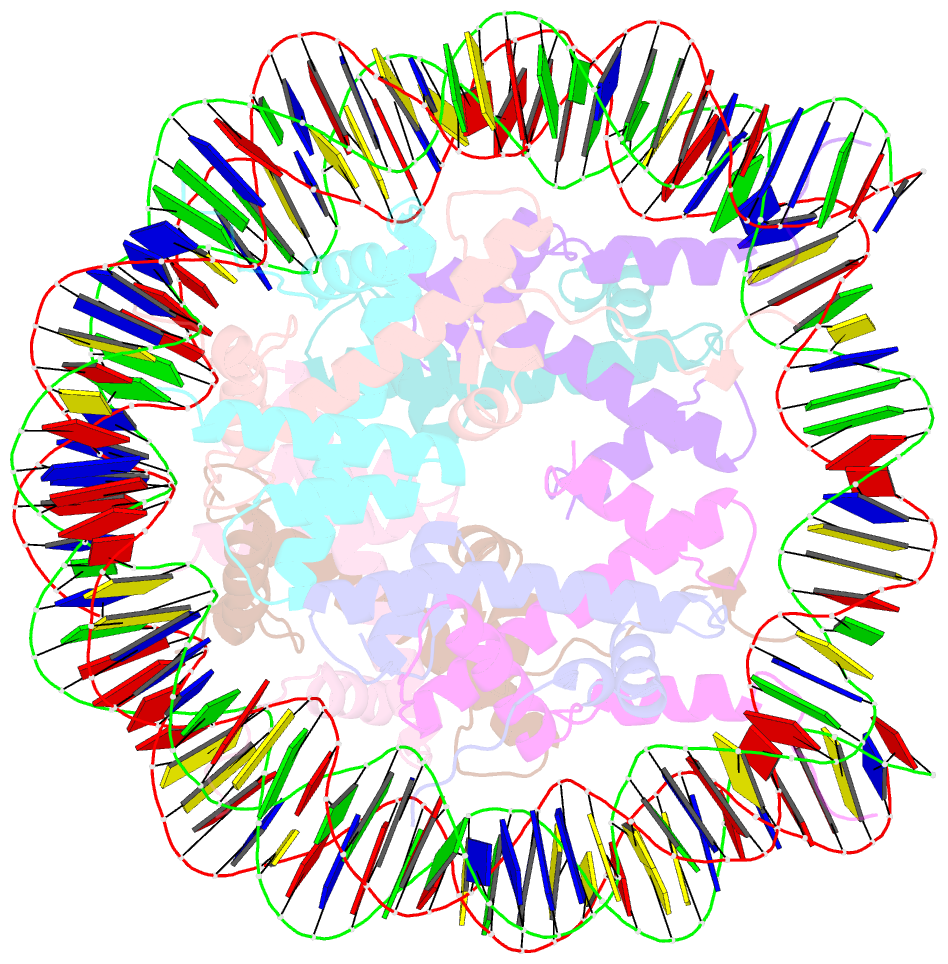Summary information and primary citation
- PDB-id
- 3lja; SNAP-derived features in text and JSON formats;
DNAproDB
- Class
- structural protein-DNA
- Method
- X-ray (2.75 Å)
- Summary
- Using soft x-rays for a detailed picture of divalent metal binding in the nucleosome
- Reference
- Wu B, Davey CA (2010): "Using soft X-rays for a detailed picture of divalent metal binding in the nucleosome." J.Mol.Biol., 398, 633-640. doi: 10.1016/j.jmb.2010.03.038.
- Abstract
- Divalent metals associate with DNA in a site-selective manner, which can influence nucleosome positioning, mobility, compaction, and recognition by nuclear factors. We previously characterized divalent metal binding in the nucleosome core using hard (short-wavelength) X-rays allowing high-resolution crystallographic determination of the strongest affinity sites, which revealed that Mn(2+) associates with the DNA major groove in a sequence- and conformation-dependent manner. In this study, we obtained diffraction data with soft X-rays at the Mn(2+) absorption edge for a core particle crystal in the presence of 10 mM MnSO(4), mimicking prevailing Mg(2+) concentration in the nucleus. This provides an exceptional view of counterion binding in the nucleosome through identification of 45 divalent metal binding sites. In addition to that at the well-characterized major interparticle interface, only one other histone-divalent metal binding site is found, which corresponds to a symmetry-related counterpart on the 'free' H2B alpha1 helix C-terminus. This emphasizes the importance of the alpha-helix dipole in ion binding and suggests that the H2B motif may serve as a nucleation site in nucleosome compaction. The 43 sites associated with the DNA are characterized by (1) high-affinity direct coordination at the most electrostatically favorable major groove locations, (2) metal hydrate binding to the major groove, (3) direct coordination to phosphate groups at sites of high charge density, (4) metal hydrate binding in the minor groove, or (5) metal hydrate-divalent anion pairing. Metal hydrates are found within the minor groove only at locations displaying a narrow range of high-intermediate width and to which histone N-terminal tails are not associated or proximal. This indicates that divalent metals and histone tails can both collaborate and compete in minor groove association, which sheds light on nucleosome solubility and chromatin compaction behavior.





